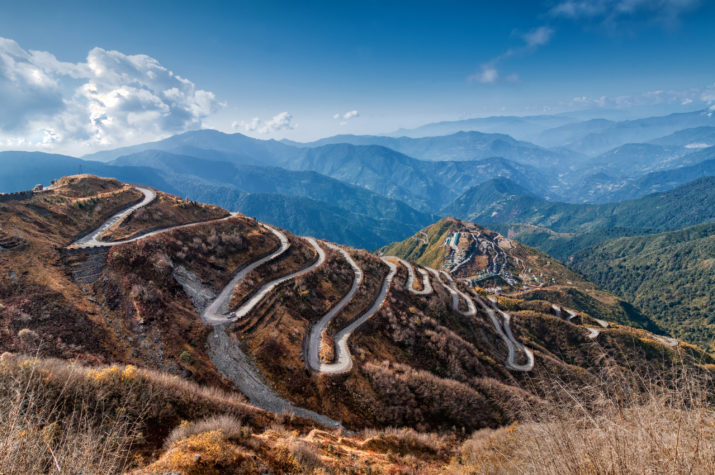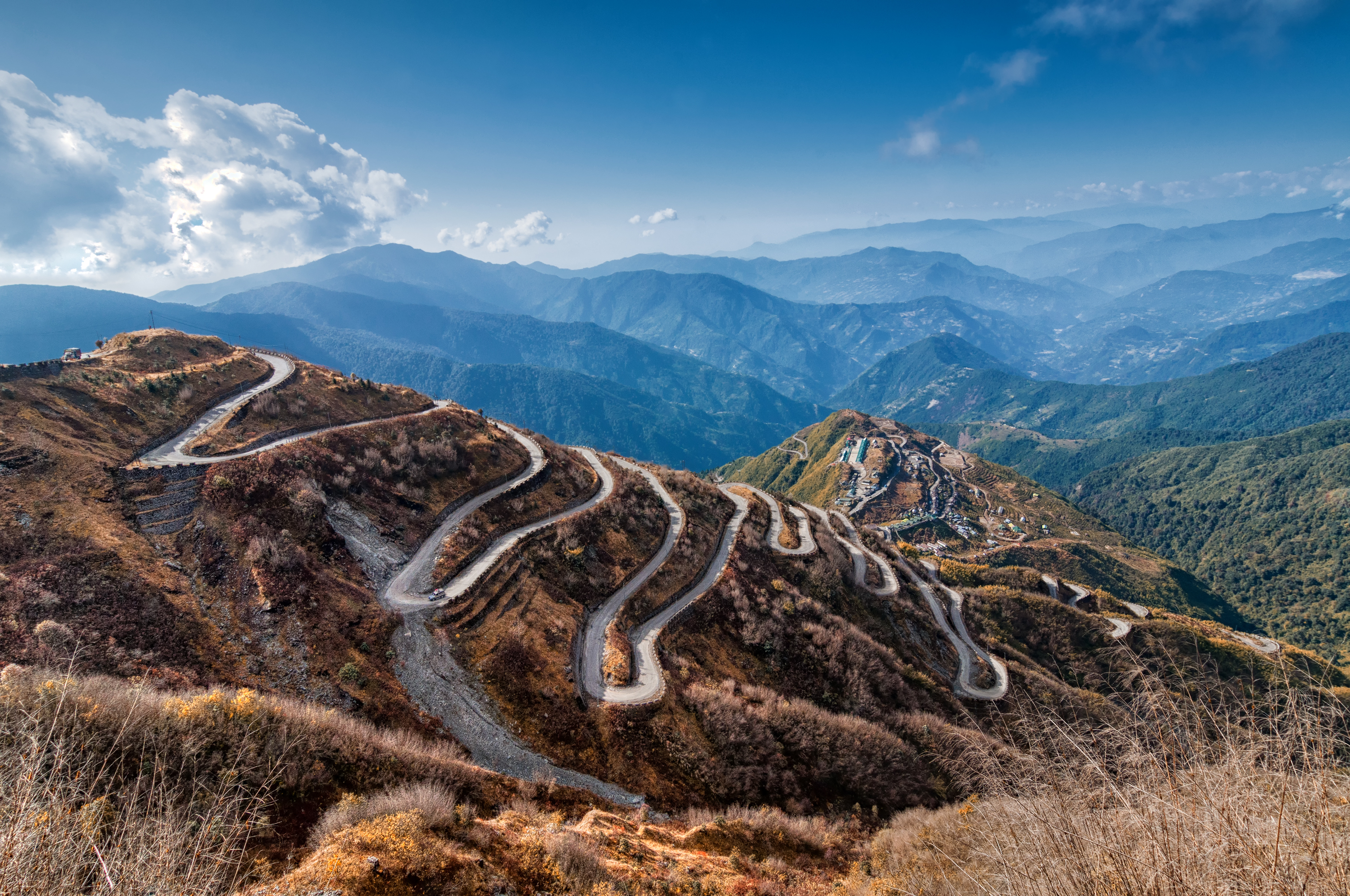

This is part of our special feature on Europe-China Relations.
Central Asia finds itself at a critical juncture. At a time when other regions and geopolitical hotspots are dominating the political and media headlines, Central Asia has been quietly taking advantage of the extraordinary opportunities deriving from the region’s increasingly central role in the numerous connectivity initiatives and corridors that are traversing Eurasia, of which China’s Belt and Road Initiative (BRI) is a primary example. Certainly, one can imply that a certain dynamism is emerging in the region when reading the following headlines: “Why Central Asia Counts,”[1] “Central Asia: A new Hub of Global Integration,”[2] and “A New Era of Cooperation in Central Asia.”[3]
Not so long ago, the region was characterized as being “largely ignored as a scholarly backwater of the defunct communist world system.”[4] Yet, as scholar André Gunder Frank suggested in 1992, “while the region appears as a sort of black hole in the middle of the world…Central Asia is perhaps the most important and most neglected part of the world and its history.”[5] Indeed, Central Asia remains overlooked and understudied in the academic literature on the Belt and Road Initiative; and in analyses dealing with the Asian Century or Eurasian connectivity, Central Asia seems to be only an afterthought or a footnote. It is seen as a passive transit route, or a geopolitical vacuum to be filled by external powers, rather than an active actor or shaper of the BRI. Yet, Central Asia is critical to the success of these connectivity projects, in particular two of the BRI’s land corridors: the New Eurasian land bridge economic corridor through Kazakhstan and Russia, and the China-Central-Asia West Asia corridor which links all five Central Asian Republics (CARs).[6]
Of particular relevance to the EU and China are the renewed prospects for trade enhancement and facilitation in the region, especially within the context of the increased importance of land-based trade corridors linking Asia with Europe. Both the EU and China have much to gain from a stable, well-connected Central Asia, a region in which both can play a key role, not only in terms of building hard infrastructure (pipelines, roads etc) but also in the removal of the bottlenecks to trade. This can be achieved through the simplification of border crossings and customs procedures, harmonisation of logistics, trade regulations and infrastructure standards (i.e. soft infrastructure).
From Core to Periphery, and Back to the Core?
Up until the sixteenth century, Central Asia was a hub for commerce, science, technology and innovation; a region deeply integrated with the global economy and dominating the caravan trade along the old Silk Road. Then, however, as the development of more profitable shipping routes led to the decline of the land-based trade, Central Asia quietly descended into stagnation during the centuries ahead. Firstly, the region became a playground of big power rivalry in the nineteenth century (the so-called Great Game which pitted the Russian and British empires against each other) before plunging further into anonymity and decay throughout the Soviet era. After their independence in 1991, the five republics were characterised by a strong sense of nationalism and consolidation of their recently acquired sovereignty. They were mostly inward-looking, reflected in policies of economic self-sufficiency, import substitution industrialisation and resistance to pursue regional cooperation and integration.
Today, both regional and global powers are paying increasing attention to Central Asia, investing political and economic capital in order to strengthen relations. India has a “Connect Central Asia” policy, Pakistan is looking to energy-rich Tajikistan and Kyrgyzstan to palliate its ongoing energy deficit, and China is busy rolling out its Belt and Road Initiative. In this context, fears are often expressed that as Central Asia finds itself amongst the overlapping spheres of influence of several powers (China, Russia, India and to a lesser extent Iran and Turkey), we may be witnessing a twenty-first century re-enactment of the Great Game.[7] However, analogies of past great games are not the most useful lens through which to understand contemporary Central Asia. These nations are firmly in control of their own destiny and no longer pawns at the hands of competing superpowers.
Central Asian economies are slowly integrating into the global economy, trade and investment flows and global value and supply chains through the modernisation, diversification and liberalisation of their economies. Uzbekistan, in particular, has surprised many pundits by the speed and scope of the large-scale domestic economic reforms and opening-up that it has carried out under President Shavkat Mirziyoyev, who came to power in December 2016 after the passing of Islam Karimov.
Countries which were on the verge of war not so long ago (Uzbekistan and Tajikistan, for example, over the construction of the Rogun dam) are mending ties, flights between capitals are opening, progress is being achieved in border demarcation (Uzbekistan and Kyrgyzstan signed an agreement last year demarcating 85 percent of their border[8]), and intra-regional trade is rising, a welcome development considering that Central Asia is the region with the second lowest intra-regional trade levels following South Asia.[9]
Furthermore, the meeting of Central Asian heads of state on March 15,2018 in Astana has infused a renewed optimism. For a region largely characterised by mistrust between its leaders, this was indeed an historic occasion (despite the noticeable absence of Turkmenistan’s head of state). While the precise future format and frequency of these meetings remain uncertain at this stage, as well as the degree of institutionalisation and formality aimed for, it can at least provide a useful platform for all countries to devise joint approaches to the management of trade, energy and transportation corridors and the realisation of infrastructure projects under the BRI umbrella.[10]
As a result of these developments, there is renewed confidence of foreign investors in Central Asia. The European Bank for Reconstruction and Development (EBRD) returned to Uzbekistan last year after a decade-long absence;[11] Uzbekistan is also on its way to obtaining membership of the World Trade Organisation (WTO), which will further facilitate trade facilitation and harmonisation.[12] Even Turkmenistan, despite its permanent neutrality status, is discussing the possibility of WTO membership.[13] The Asian Development Bank (ADB) – through its Central Asia Regional Economic Programme (CAREC) – and other international organisations have also been actively developing multimodal corridor networks across the region.
China: A Double-Edged Sword
The concept of the Silk Road today is firmly associated with China’s mammoth project BRI. However, it is often forgotten that it was the European Union, which pioneered the revival of the Silk Roads through its Transport Corridor Europe-Caucasus-Asia (TRACECA) which had been launched in the 1990s.[14] This initiative, however, failed to make an impact, as did the United States (US) with its New Silk Road Initiative in 2011. However, whereas Europe and America failed, China has been able to comprehensively develop and implement a strategy centred on the revival of the silk roads. In Central Asia, China has become the most important trading partners, investor, lender and purchaser of energy supplies.
It is no surprise that President Xi Jinping chose Kazakhstan to announce the Belt and Road Initiative in 2013, a country which is aligning its national development strategy “Nurly Zhol” (Great Steppe) with the BRI. For China, the Central Asian Republics (CARs) are the gateway to diversified land routes to markets to its West. They also help to alleviate the congestion in China’s East and its ports. As such, in the years to come, the region will be an important litmus test for the success of BRI.
According to Asian Development Bank estimates, USD 33 billion per annum will need to be spent during the period 2016-2030 to tackle the massive infrastructure gap in Central Asia alone.[15] The region inherited a crumbling Soviet-era infrastructure which reflects the hub-and-spoke arrangement in which “all roads led to Moscow;” however, current trading patterns flow mostly East-West, and new infrastructure is needed to reflect this new reality. An added problem is that the width of train track gauges differs, with the former Soviet republics using a wider gauge (1520mm) compared to the standard gauge (1435 mm) used in China and Europe.[16] As such, trains passing Central Asia must undergo a so-called break-of-gauge. This infrastructure deficit partly explains Central Asia’s poor ratings in the 2016 DHL Global Connectedness Index, which reflects changes in twelve types of cross-border trade, capital, information, and people flows across 140 countries. Only Kazakhstan appears in the top 100 (at 60) while Uzbekistan and Kyrgyzstan are ranked near the bottom (139 and 124, respectively).[17]
While the BRI can be a great facilitator for connectivity and development in the region, Central Asian countries, at the same time, need to gain a greater sense of ownership over the shape and contours of the BRI projects passing their territory, and devise strategies to maximise local impact. As President Shavkat Mirziyoyev recently implied, Uzbekistan aims to be more than a transit country, and hopes to develop as a hub in its own right: “Our common priority should be the creation of interconnected industrial technoparks, scientific and innovation clusters and free economic zones along the Silk Road Economic Belt,”[18] with these being critical for countries to move up the value chain to more knowledge-intensive sectors, diversify their economies, and harness the fourth industrial revolution.
For all the opportunities, there are also two worrying developments for Chinese policymakers to take into account. First, anti-China sentiment has been on the rise. In Kyrgyzstan there have been various bouts of public anger and disruption of operations in Chinese-owned mines over the years concerning labour and environmental standards.[19] In 2016, Kazakhstan also saw widespread protests against proposed land reform which would have allowed foreign companies (in particular Chinese) to lease agricultural land for twenty-five years, forcing the government to postpone reforms for five years.[20]
Furthermore, certain countries which over-rely on China as a trade and investment partner run the risk of entering a debt spiral upon taking Chinese loans. For instance, 40 percent of Kyrgyzstan’s public debt and 50 percent of Tajikistan’s is owed to China. These countries, according to a recent report by the Center for Global Development,[21] are facing a “high risk of debt distress” in commercial loan repayment related to BRI projects, a risk already afflicting countries such as Laos and Sri Lanka, where high-profile Chinese infrastructure projects are being developed.
Carving a niche for the EU in Central Asia
The EU has struggled to establish a visible presence in Central Asia. Relations with the region are guided by the 2007 EU Central Asia Strategy, which defines seven areas of cooperation.[22] Despite this, however, the budget allocation has been limited (EUR 750 million for the period 2007-2013 and EUR 1.2 billion for 2014-2020), and the implementation has been weak, partly due to obscure and bureaucratic EU funding procedures. Furthermore, with its resources overstretched in dealing with crises in the Southern and Eastern Neighbourhoods and strengthening trade partnerships in the Far East, the EU’s presence in Central Asia is one of limited impact and visibility. A number of recent high-level visits have, however, helped to raise the profile of Central Asia among policymakers in Brussels and other centres of European power. These include notably the two trips by High Representative for Foreign Affairs and Security Policy, Federica Mogherini, to Uzbekistan within five months: to participate in the International conference “Central Asia: Shared Past and a Common Future, Cooperation for Sustainable Development and Mutual Prosperity” in Sarmarkand in November 2017, and to attend the Tashkent Conference on Afghanistan in March 2018.
The EU is expected to release two important strategies in the coming months that will hopefully attach a greater weight to links with Central Asia. As new geopolitical and geo-economic realities are bringing the EU and Central Asia closer together in various fields, from energy to transportation, the EU Strategy on Connecting Europe and Asia and the EU Central Asia Strategy (due in 2019) provides new opportunities for engagement. The new EU Central Asia Strategy, in particular, will need to be more pragmatic, interest based and result oriented, more flexible than its predecessor, and perhaps less normative and values-driven (despite the evident reluctance of certain EU Member States). The EU should focus on a few areas where the EU presence can be of visible added value, such as the development of the private sector (SMEs in particular, as the engines of growth, innovation, competitiveness and job creation in an economy) and border management, through its Border Management Programme for Central Asia (BOMCA).
The budget allocated to BOMCA for the period 2015-2018 is quite negligible – only EUR 5 million. While this programme has had a heavier focus on border security in the past, it can also be critical in building up soft infrastructure in the region, supporting technical modernisation of border installations and training customs personnel as a building block to smoother cross-border trade. Considering that customs processing are one of the least efficient and most time consuming in the world (reflected in the very poor rankings of the countries in the region in the World Bank’s Logistics Performance Index and Trading Across Borders Index[23]), the EU can certainly be of added value in this regard. As a recent study by the Germany Institute for Security and International Affairs points out, efficient border management in Central Asia can potentially contribute to growth and stability in Central Asia, and more bluntly, the “Silk Road Economic Belt will not work without border management reform.”[24]
Lastly, geopolitical developments in recent years have pulled the EU away from dependence on Russian gas and into the Central Asian orbit. Talks were initiated in 2015 concerning the possibility for the EU to start importing Turkmen gas by 2019; this would require the construction of a Trans-Caspian pipeline which, to date, has not come to fruition.[25] Regardless, the diversification of EU energy imports and the important role Turkmenistan can herein play, points to the necessity of the EU to upgrade its diplomatic presence in Turkmenistan from a liaison office to a full-fledged delegation.
Of course, there are some stumbling blocks which should not be ignored by either China or the EU. Central Asia, at the moment, is going two steps forward, one step backward. For all the progress and positive developments outlined above, there are also a few hurdles: Some projects under the BRI umbrella have either been cancelled (e.g. Line D of the Central Asia-China Gas Pipeline Network)[26] or suffered lengthy delays (e.g. the Uzbekistan-Kyrgyzstan-China railway).[27] Turkmenistan and Tajikistan were noticeably absent from the Belt and Road Forum held in Beijing in May 2017. Furthermore, in 2017, Kyrgyzstan fell just short of launching a full trade dispute against Kazakhstan at the WTO after the former accused the latter of restricting border trade, despite both belonging to the Eurasian Economic Union.[28] Lastly, growing instability in regions bordering China (Tajikistan’s Gorno-Badakhstan autonomous region is one example) has been a cause of concern in Beijing as it may delay or derail planned projects, and has consequently led to an increased Chinese security presence.[29]
In conclusion, Central Asia is well positioned to benefit from growing Eurasian land trade and the development of new transportation corridors, which cumulatively are set to help the region integrate into the global economy and to reach world markets. With the rolling out of the Belt and Road Initiative and the two land-based corridors that traverse Central Asia, if harnessed correctly, the region’s handicap (geographical landlockedness and remoteness impeding their participation in world trade) can turn into a blessing. With China providing the much-needed pipelines, roads and railways, hard infrastructure development is only one side of the coin; and the EU can complement these efforts by strengthening the equally-important soft infrastructure – the regulatory and legal frameworks – needed to realize the great connectivity potential of Central Asia.
Alberto Turkstra is the Programme Coordinator at the Brussels-based European Institute for Asian Studies, a policy and research think-tank supported by the European Union, which aims to promote understanding and cooperation between the EU and Asia. He holds a Master in International Relations from the University of Melbourne and a BSc in Economics and Human Geography from Queen Mary, University of London. During his studies he spent time abroad at the University of California, Berkeley and at the University of Delhi. His main research interests include international security, Chinese foreign policy and China-Africa relations.
Photo: Curvy roads on Old Silk Route, Silk trading route between China and India, Sikkim | Shutterstock
[1] Starr, F. (2017, November 6). Why Central Asia Counts. Central Asia-Caucasus Institute Silk Road Studies Programme. Retrieved from https://www.silkroadstudies.org/publications/joint-center-publications/item/13265-why-central-asia-counts.html
[2] Lim, J. (2007, November 29). Central Asia: A New Hub of Global Integration. Brookings. Retrieved from https://www.brookings.edu/articles/central-asia-a-new-hub-of-global-integration/
[3] Nakao, T. (2017, October 27). A New Era of Cooperation in Central Asia. Asian Development Bank Op-Ed. Retrieved from https://www.adb.org/news/op-ed/new-era-cooperation-central-asia
[4] Luong, P. (2002). Institutional Change and Political Continuity in Post-Soviet Central Asia. Cambridge, UK: Cambridge University Press. In Pacek, A.C. (2008). Book Review: Institutional Change and Political Continuity in Post-Soviet Central Asia, The Journal of Politics, 65.
[5] Gunder Frank, A. (1992). The Centrality of Central Asia, Studies in History, 8 (1), pp. 43-97
[6] For a visualization of the corridors, please see https://www.merics.org/en/china-mapping/silk-road-initiative
[7] Swanstrom, N. (2007). China and Central Asia: A New Great Game or Traditional Vassal Relations? Journal of Contemporary China, 45, pp 569-584
[8] Xinhua (2017, September 5). Kyrgyzstan, Uzbekistan sign agreement on borders. Retrieved from http://www.xinhuanet.com/english/2017-09/06/c_136586894.htm
[9] Embassy of Uzbekistan in New Delhi, Summary of 2017 in foreign trade policy of the Republic of Uzbekistan. Retrieved from http://www.uzbekembassy.in/summary-of-2017-in-foreign-trade-policy-of-the-republic-of-uzbekistan/
[10] Turkstra, A. (2018). Central Asian Leaders Summit Signals New Era for the Regio, European Institute for Asian Studies. Retrieved from http://www.eias.org/news/central-asian-leaders-summit-signals-new-era-for-the-region-says-eias-programme-coordinator-alberto-turkstra/
[11] Putz, C. (2017, October 20). EBRD Approves First New Projects for Uzbekistan Since 2007. The Diplomat. Retrieved from https://thediplomat.com/2017/10/ebrd-approves-first-new-projects-for-uzbekistan-since-2007/
[12] UzDaily (2018, March 14). Uzbekistan and IFIs discuss country’s accession to the WTO. Retrieved From
https://www.uzdaily.com/articles-id-43112.htm
[13] Aliyeva, K. (2017, February 21). Turkmenistan studies possibility of WTO membership. Azernews. Retrieved from https://www.azernews.az/region/109221.html
[14] For more information on TRACECA, please see http://www.traceca-org.org/en/home/
[15] Asian Development Bank (ADB)(2017). Meeting Asia’s Infrastructure Needs: Highlights. Manila
[16] Putz, C. (2016, January 14). Can China Fix Central Asia’s Soviet Rail Legacy? The Diplomat. Retrieved from https://thediplomat.com/2016/01/can-china-fix-central-asias-soviet-rail-legacy/
[17] DHL Global Connectedness Index 2016: The State of Globalization in an Age of Ambiguity. Download full study here: http://www.dhl.com/content/dam/downloads/g0/about_us/logistics_insights/gci_2016/DHL_GCI_2016_full_study.pdf
[18] Tashkent Times (2017, May 15). Remarks by Shavkat Mirziyoyev at Leaders’ Roundtable Summit at Belt and Road Forum. Retrieved from http://tashkenttimes.uz/world/928-shavkat-mirziyoyev-s-speech-at-leaders-roundtable-summit-at-belt-and-road-forum
[19] Radio Free Europe Radio Liberty (2018, April 17). Fifteen Protesters Arrested Over Unrest At Kyrgyz Gold-Mining Site. Retrieved from https://www.rferl.org/a/kyrgyzstan-15-protesters-arrested-over-unrest-at-gold-mining-site/29172272.html
[20] BBC (2016, April 28). Kazakhstan’s Land Reform Protests Explained. Retrieved from http://www.bbc.co.uk/news/world-asia-36163103
[21] Hurley, J. et al (2018). Examining the Debt Implications of the Belt and Road Initiative from a Policy Perspective. Center for Global Development, Policy Paper 121
[22] The full text of the 2007 EU-Central Asia Strategy is available here: https://eeas.europa.eu/sites/eeas/files/st_10113_2007_init_en.pdf
[23] World Bank Logistics Performance Index data accessible though https://lpi.worldbank.org ; World Bank Trading Across Borders Index data accessible through http://www.doingbusiness.org/data/exploretopics/trading-across-borders
[24] Schiek, S. (2017). Movement on the Silk Road: China’s “Belt and Road” Initiative as an Incentive for Intergovernmental Cooperation and Reforms at Central Asia’s Borders, SWP Research Paper 2017/RP 12
[25] Karayianni, M. (2017). Trans-Caspian Gas Pipeline: Is There a Future After All? Caspian Center for Energy and Environment, Policy Brief No. 33
[26] Michel, C. (2017, March 21). The Central Asia-China Gas Pipeline Network: Line D(ead). The Diplomat. Retrieved from https://thediplomat.com/2017/03/the-central-asia-china-gas-pipeline-network-line-dead/
[27] Sharip, F. (2017, November 17). Controversial Railway Project Consolidates China’s Foothold in Central Asia, Eurasia Daily Monitor 14(149)
[28] Putz, C. (2017, October 19). Kyrgyzstan Alerts WTO to Kazakhstan Border Kerfuffle. The Diplomat. Retrieved from https://thediplomat.com/2017/10/kyrgyzstan-alerts-wto-to-kazakhstan-border-kerfuffle/
[29] International Crisis Group Rivals for Authority in Tajikistan’s Gorno-Badakhshan Crisis Group Europe and Central Asia Briefing N°87, 14 March 2018
Published on June 5, 2018.




